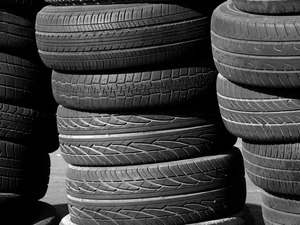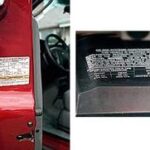Although there are differences in compounds, treads and tire performance, the basic tire manufacturing process is the same for all tires.
Compounds and Design
The exact composition of the rubber compounds used in a tire is proprietary and a tightly guarded secret. Although some of the features, such as belt design and placement, are often released as sales and marketing material, many small details, such as the exact composition of the belts, is rarely disclosed. Regardless of the compounds, the overall process of tire manufacturing varies little between the various manufacturers.
Liner and Substrate
The first step in making a tire is to lay down a liner. The liner will end up on the inside of the tire and is the supporting structure for tire components early in manufacturing. In some higher end tires, the liner is key is both making the tire puncture resistant and in maintaining run-flat tire’s ability to maintain their shape while running at low to moderate speeds. The bead wires, which will hold the tires on the rim once the tire is formed, are placed on the outside of the liner under layers of rubber that will hold the tire belts.
Belts
The tire belts are laid on the rubber layer that lies on the liner. The belts can be made of a number of materials, including steel, Kevlar, or other puncture resistant material. In addition to protecting the tire from punctures, the belts allow the rubber to flex, yet remain intact during driving. Multiple belts are often overlaid at different angles to give the tire certain performance characteristics. Once the belts and other components are added, they are covered with a layer of rubber. The two sides of the flat rubber are brought together and the center is inflated to make the correct tire shape.
Tread
While the tire is inflated on the manufacturing jig, reinforcing tread rubber is added to help stabilize the tire. More steel cords are added over the top of the rubber tread plies to strengthen the tire and provide further stability and puncture resistance. Once these layers are in place, the tread rubber is laid over the top. Tread rubber is a thick, harder rubber into which the tread will be cut and formed. Once the tread rubber has been laid, the semi-formed tire is goes into a curer, where it is heated to vulcanize the rubber, finalize the tire shape, and form the tire’s tread. The curer used pressurized hot water to fuse the rubber to the steel and other components while turning the rubber from a hard material to one that is pliable and suitable for use as an tire.
Finishing and Cooling
Once the tire is heated, bonded and formed, it is ready cooled and is ready for sale. The forming process embosses the manufacturer’s name and model on the side of the tire. Critical safety data, such as inflation pressure, is also embossed on the side of the tire.




